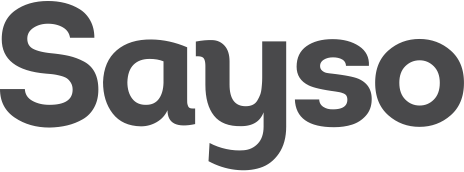Sayso AI Postmortem
by Ganna Tymko
Despite raising venture capital, signing a customer with 275K employees, and generating $75K in revenue, Sayso AI ultimately failed.
Let me start by acknowledging that building a startup around a new core technology—developed from scratch and still in its infancy—is very different from building a traditional SaaS company, even if the end business model may look like SaaS. When research is at the heart of the product, the breakthroughs needed to make that product useful don’t always yield to the founder’s will—or conform to the roadmaps and timelines the founder envisions. This carries meaningful risk right from the start.
That said, Sayso made some important mistakes over its four years of operation—and here’s a brief reflection on what we learned.
Critical Missteps:
1. Starting with the Wrong Use Case
We pursued enhancing team communication for productivity gains (saving money lost on miscommunication) when the stronger market opportunity was in international customer care (making money through excellent customer interactions). This seemingly small difference had massive implications:
Market Entry Advantage: Customer care offered a clear ROI that improved the entire business model of BPOs (customers-to-be), offering a clear sales path with an urgent need for a solution rather than our initial productivity-focused approach that was solving a painful but not urgent problem.
Technical Requirements Gap: Video calls demanded <100ms latency with voice preservation (ideally no more than 40ms latency), while customer care audio calls allowed for up to 200ms latency without voice preservation—essentially a completely different level of innovation and engineering challenge. By choosing the less financially obvious and more technically challenging use case, we shot ourselves in the foot at the starting line, allowing competitors targeting BPOs to outpace our sales, fundraising and core tech development efforts.
Team Misalignments
As CEO, I set out to build a multibillion-dollar company that delivered real societal value. My original technical co-founder—a brilliant and mission-driven scientist—was motivated by innovation and impact, but not by financial outcomes.
While we shared a commitment to doing good, we were misaligned on the definition of success and the urgency required to achieve it. That gap affected our momentum and eventually led to his departure.
In the rush to rebuild, I delegated most technical hiring to a newly appointed CTO and didn’t stay closely involved in team selection. We brought on smart, well-intentioned people, but not everyone was matched to the specific intensity and pace that an early-stage startup demands. In a resource-constrained environment, even small mismatches can create drag. For us, it meant lost time—when speed was everything.
Late Strategic Pivot
We eventually recognized that BPOs were the right market and signed a major partner with 275K employees. But by then, we had fallen too far behind in building the company to capitalize on the opportunity.
Key Lessons Learned
"It's the Revenue, Stupid.": Revenue potential should guide product strategy. Not all valuable use cases convert at the same pace. Solving a money-making problem accelerates adoption more than addressing painful—but non-urgent—productivity challenges.
Make It as Easy as Possible: Choose the product with the fewest technical hurdles. In the early stages, speed beats sophistication. Traction is everything.
Align at the Core: Founding teams must be aligned not just on mission, but also on ambition, definitions of success, and tolerance for risk.
Talent Makes or Breaks It: Startups are unforgiving. Even one underperformer can slow down the entire early team.
My Personal Reflection
Even though the lessons above might seem obvious in hindsight, living them was a completely different story. I listened to my investors and mentors, watched all the YC videos, read countless founder blogs—and thought I was prepared. But building a startup day after day, deep in the trenches, financially and personally invested, was messier, harder, and more humbling than anything theory could have taught me.


